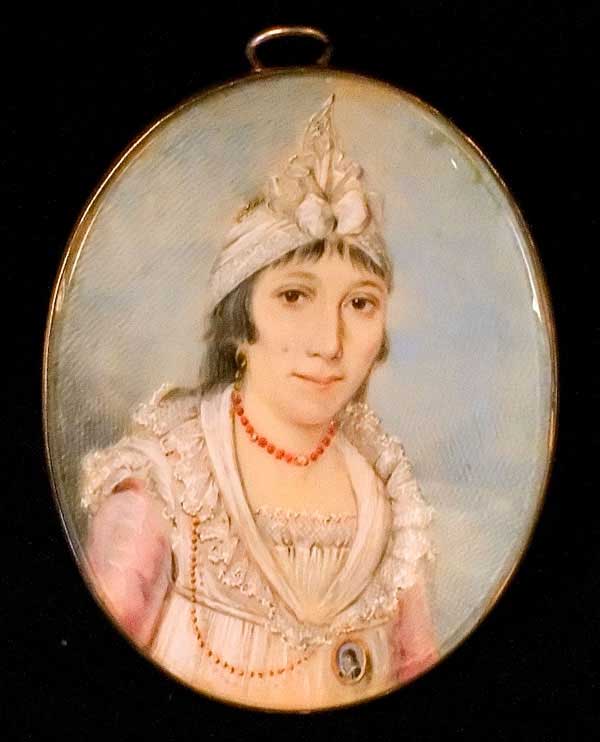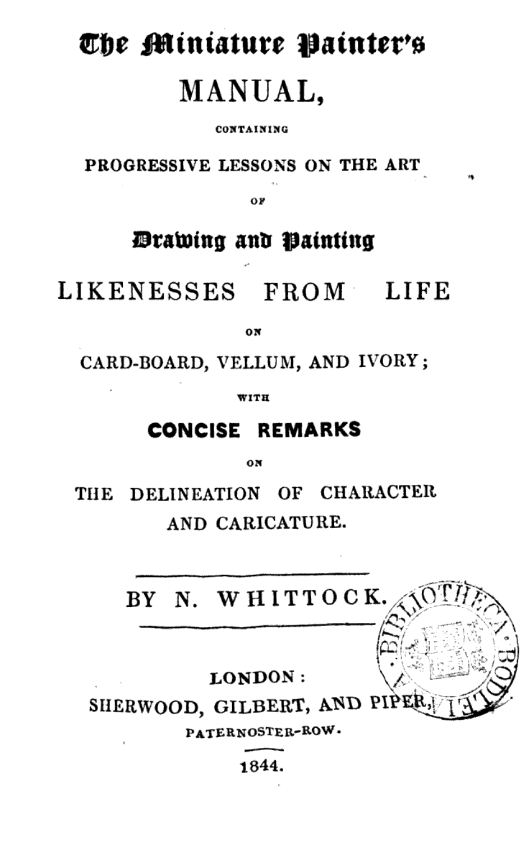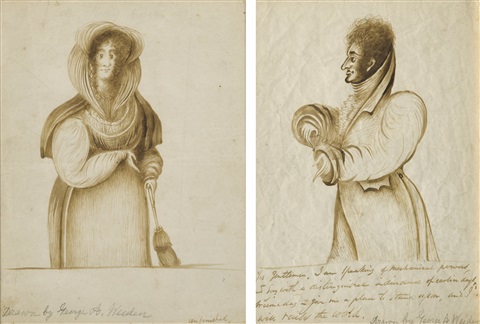Paintings about Early American Jews help scholars answer questions about how Jews dressed as well as wished to be seen by others.
Portraits of Jews between 1720-1883 tend to come in two options: small watercolor-on-ivory miniatures and larger paintings, often using oil paints on canvas. Ivory miniatures tend to be about 3 x 2 1/2 in. in size, while full-sized oil portraits could be as large as 50 x 40 in. (over 4 x 3 feet). Yet, because miniatures were made on ivory and were extremely difficult to make, the portraits tended to cost about the same.
Miniatures
Ivory miniatures were popular among Jewish elites in the Atlantic World, particularly between 1720-1830. Unlike large oil paintings, miniatures were quite fragile. They were both susceptible to sunlight and easily broken. Hence they were often exchanged between two people as a token of love or affection, particularly before or around the time of marriage. Rather than being displayed on a wall in a room visited by guests or friends, miniatures were kept close to the body, and sometimes worn as jewelry (as seen in the image below). When a miniature was gifted when someone moved far away or died, sometimes a lock of hair was braided and attached to the back of a miniature.

While some Jews such as Catherine Mendes da Costa were known for painting miniatures, most of the images in the Loeb Portrait Database were made by non-Jewish artists for Jews. The ivory was made from a thin slice of elephant’s tusk which was then scraped, bleached, and polished to give the blank ivory a warm, white, translucent quality. The artist would then sketch a design in pencil and fill it in with watercolor as shown in the miniature below.


Much of what we know about how miniatures were created comes from manuals written by miniature makers for those who wanted to learn the craft such a this book:
Several things set the techniques used by miniature makers apart. First, they used watercolors as it allowed the natural glow of the ivory to show through. Sometimes this glow was even enhanced by placing a thin sheet of silver behind the ivory of the face. Second, because paint tends to slip off of ivory, the painters developed two strategies for getting paint to adhere: hatching (short lines) and stippling (dots). If you look closely at miniatures you can often see these brush strokes.
Detail of Anonymous, Portrait of Isaac Lopez Brandon (Early 19th century). Watercolor on ivory, 3 1/8 × 2 1/2 in. Courtesy of AJHS
Miniatures are an important way that scholars gain insights into the types of clothing that Jews wore during the eighteenth and early nineteenth centuries. They also provide us with information about how elite Jews wanted to be seen. While some scholars have argued that there is very little that seems explicitly “Jewish” about these miniatures, they are a good reminder how during the era when Jews fought for civil rights they often wanted to be understood as the “same as” their Christian neighbors rather than for Jewish distinctiveness.
More resources:
Full-sized Portraits
Full-sized portraits were also popular among elite early American Jews. Often times these were hung in portions of the house where visitors could see them. Who painted the portrait helped signal the prestige of the family. Wealthy families commissioned paintings by famous artists such as Thomas Sully, Gilbert Stuart, and John Welsey Jarvis. These portraits often fit into types such as young beauties, handsome officers, and worthy burghers (Brilliant, Facing the New World, 7)
Portraits provide important evidence about how Jewish men and women wanted to be remembered as well as insights into how they dressed. In the colonial era and early nineteenth-century, clothing was a crucial marker of both class and race, and during this era, Jewish men “routinely used clothing to display their civic virtue, race, and proximity to power” (Leibman, “Material of Race”). Political cartoons and satires about Jews from this era often used loose, baggy clothing as well as unruly hair to depict Jews as uncivilized and unworthy of citizenship, for example in the caricature of statesman Mordecai Manuel Noah and his wife Rebecca below.

George A. Weeden, “Pair of Portraits of Mr. Mordecai Manuel Noah and Mrs. Rebecca jackson Noah: (ca. 1828). Courtesy of Sothebys. Pen & Ink on Paper. 8 by 6 1/2 in.
In contrast, in the portrait that Noah commissioned of himself from John Wesley Jarvis, Noah comes across as well groomed and extremely fashion savvy. Like many Jewish men of the era, Noah had himself depicted as wearing the new muscular, well crafted woolen suits and starched neckties favored by Beau Brummell. This suit was different from the bright velvet favored by men a half century earlier (as seen in the Franks childrens’ portrait below). Early nineteenth-century men’s clothes were restrained and used new tailoring techniques to sculpt the body so it looked as polished as a classical sculpture. Weeden’s cartoon mocked the elegance Noah tried to project.
Portraits commissioned by Jews, like that of other men and women of the era, tend to invoke a stylized language to persuade viewers of their tastefulness. Props weren’t just for show: they were intended to convey crucial information about the sitter. Gloves for example emphasized one’s rank and status as a free person. Books signaled the sitter was someone “principally engaged in intellectual activity” or the attainment of literacy (Tittler, Portraits, 130-131, 137). Other items like flowers emphasized youth, beauty, or fecundity. Fans had a language all their own.

